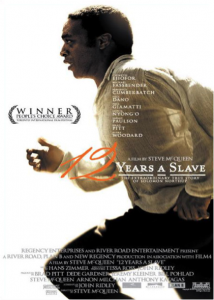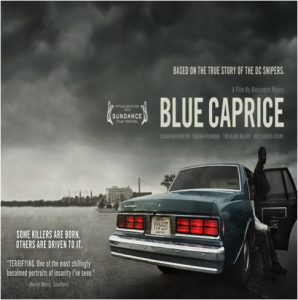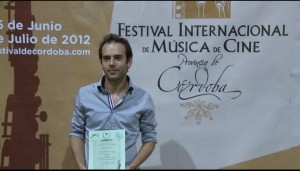By Sam Boseley and Ben Chapman
2013 was the year of Indie Film Success, both in terms of critical success from festivals (such as Sundance, Cannes, and the Spirit Awards etc.) and monetary success (such as 12 Years a Slave taking $56 million in box office).
First we must define what is meant by the term ‘Indie’ movie.
Indie films have been categorized in a number of ways, however, budget is the most common –under $20 million, under $5 million and under $1 million budget, all being numbers that have been suggested as to how a film is being classified as ‘Indie’ or not.
Any film produced away from the Studio System may also take their place as an ‘Indie’ film. Independent films usually have a limited release, and their crowning glory may be a win or two at a prestigious film festival. However, with the right backing, independent films can rival any major film, provided it finds finance for the distribution and marketing.
Indie films often take different approaches to film than Hollywood Cinema does, telling unique stories that can grip the audience.

Twelve Years a Slave (2013)
(Dir McQueen)
Backed by FOX Searchlight with a $20 million budget and an A-list cast, which includes Brad Pitt and Michael Fassbender, this film managed to gross a staggering $172 million worldwide. Put into context, a Hollywood Blockbuster that triples its budget is deemed a success. Twelve Years a Slave managed to smash that target.
Winning three OSCARS, including Best Picture, elevated this film to ‘hit breakaway status’ and a wide theatrical release. This movie was based on a true story written in 1853 by Solomon Northup, and I believe that keeps this indie film firmly in its roots.
Blue Caprice (2013)
(Dir. Moors)
Although not as well known as FOX Searchlight, Intrinsic Value Films and SimonSays Entertainment, amongst others, combined their resources in an effort to get a movie about the 2002 Washington sniper showcased. Sundance Select found potential in this movie and assisted in giving it the theatrical release, although limited, that it deserved.
While not boasting an A-List cast, the lead was played by Isaiah Washington, a veteran of the small screen in such programs as Law and Order and Homicide: Life on the Streets; he is also no stranger to movies, with Romeo Must Die (Dir. Bartkowiak – 2000) amongst his credits. Joey Lauren Adams is also a household name with both indie and mainstream movie credits acting in many movies, including Kevin Smith written-and-directed for features – Mallrats (1995)(Estimated budget $6M) and Jay and Silent Bob Strike Back (2001) (Budget Est. 22-24M)
Having grossed an estimated $140,000 and with the DVD having just hit the shelves, exposure for this movie will be high. With many nominations at various film festivals, including two WINS in the 2014 Black Reel Awards for both Outstanding Independent Feature (Dir. Moors) and Best Independent Film (Ron Simons – SimonSays Entertainment).
One movie to watch out for in 2014
The Psychological Thriller ‘Porcelain Presence’ (Dirs. Bibb & Jay)
I had the pleasure of asking one half of the co-directing/co-producing duo, Emily Bibb (remember the name!) a few questions. With the emphasis on finance in so many movies, Porcelain Presence is 100% self funded. There are no crowd funding campaigns; a shoe-string budget, Emily, along with Chris Jay both have full time jobs, and all available spare time: nights / weekends / holidays are spent filmmaking.
The Porcelain Presence Trailer
Run time - TBA
Rating – 15 (But not officially rated by the BBFC yet)
Production company – Fairly Odd Films
Country of Production: UK
Release date: 2014
Q. What influences your work?
A. One of the earliest influences for Porcelain Presence, was due to both myself and Chris (Jay, Co-writer/director) being big fans of Tim Burton’s work. I love to make particularly dark and creepy films. This also reflects in all of my short films I have made over the years. I’m also a big fan of horrors/psychological thrillers; - films that really make the audience think. One of my favourite horror films of all time is The Orphanage (Dir. Pellington, 2013) – it’s one of those films which keeps the audience on edge, and guessing the whole way through!
Q. What, in your opinion, makes a successful Indie film?
A. So many elements here, the list could go on, but I will try to keep it short! One of the strongest things you can have to make a successful indie film, is a cast and crew that are dedicated, with a strong determination to succeed. You also need to have a willingness to keep learning new things, and to keep persevering until you are happy with your film. And let’s not forget one of the biggest - you need a really strong script! Another thing, which I know isn’t something a lot of indie filmmakers think of until it’s too late – is the marketing side of it. As we have self-funded Porcelain Presence we haven’t had the budget to be able to advertise, but what we have done from the very beginning is set up a page on Twitter and Facebook for the film. It’s great to get the word out and build a following. If we didn’t have those, pretty much no-one would know about the film… and to note, if you’re thinking of crowd funding, then you should set up a Twitter page long before you begin your campaign, it will only help in the long run, as your campaign will reach more people! And for all filmmakers – YouTube is essential – Post trailers/teasers/behind the scenes clips/interviews… All your channels should link back to your YouTube channel, it’s the 2nd biggest search engine (behind Google) so think how many millions of people could possibly access your videos! We’re currently building up our YouTube channel too: www.youtube.com/fairlyoddfilms
Q. This film is self funded, rather than crowd funded. What was the thinking behind this.
A. Self-funding Porcelain Presence has a lot to do with this being our first feature film. It has enabled us to have more time/freedom to be able to make the film and I also believe that as we are self-funding, it has given us full creative control. Also, if we were crowd funding for example, we would now be in a position where we owed perks to the people who had supported us – and there would be added pressure on us to finish the film quicker and because of this there may not be time for us to go back and perfect certain scenes. It gives us the freedom to do it right at our own pace, and make it the best we possibly can!
Q. What have you found to be the pros and cons of this approach?
A. As you can imagine, it’s been pretty difficult – I would say that the main pro is definitely, as mentioned above – it has given us full creative control over the project, as we’ve no other financers telling us what they’d like us to do… As for the main con, it has unfortunately meant that we have had to push certain shoots back because we have needed to raise the finance between ourselves to go ahead with some of the bigger shoots, like our psychiatric scenes, and our 1970s scenes. It’s also meant that we’ve had to ask people we know if they mind letting us borrowing their houses to film in, whereas if we had financing we would rent out places specifically for the film, so that we weren’t getting in anyone’s way!
Q. Many filmmaker started with indie films; some stayed close to their roots and others dropped them for the bright lights of Hollywood. Where do you see yourself in five years?
A. In five years I see myself still working on other people’s films and also directing/producing my own features and short films. Porcelain Presence is my debut feature, but now that I’ve done a feature I’ve got the feature bug! I’d like to do more feature films after PP (as well as some short films too!). I’d also like to have Porcelain Presence, and possibly another feature screened at a festival and released on DVD
-----
A massive thank you to Emily Bibb for answering our questions, and I for one cannot wait to see it.
Movies such as Twelve Years a Slave and Blue Caprice have cemented their status with various award wins in 2013 and 2014.
Four months into 2014 and Indie film production is still going strong. With a host of Film Festivals taking place every month, it won’t be long before the next gem will be unearthed.


